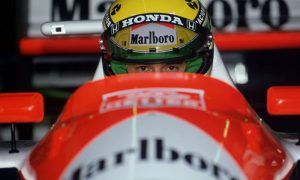Force India heads toward the top

The Force India set-up he inherited was very different to that of British American Racing where Szafnauer had started his F1 career. Being much smaller and compact, it allowed him to get involved in almost every facet of the team's operations.
"You have to do all the same tasks with less people,” he acknowledged at the time. “The job is the same: you have to go racing, you have to be competitive, you have to design a car, you have to build a car, you need quality control, you need a marketing group.
"You also get satisfaction from performance when your involvement is bigger. I like that," he added. "With that comes the fact that you’ll be able to know more intimately every individual, which I think is a very important point when you are building a team."
It's been his ability to understand and manage diverse personalities and to identify and attract top talent that has proved to be Szafnauer's super power over the years. By 2015 Force India was fifth in the standings and in 2016 it broke into the top four for the first time, behind only Mercedes, Red Bull and Ferrari. The team did it again in 2017 to show that this break-through success was no fluke, and people were now talking about when - rather than if - it would be challenging for the title.
Much of this progress was directly thanks to Szafnauer's management of the team. Although Vijay Mallya was nominally team principal, his actual involvement was limited. Similarly, deputy team principal Bob Fernley's role was to serve primarily as Mallya's eyes and ears on site and to represent the team at FIA meetings rather than to get closely involved with the day-to-day running of the team at the factory or trackside. That was all down to Szafnauer.
Unfortunately all this successful hard work and progress was about to hit a major stumbling block. Within 12 months the team found itself facing outright extinction - and only Szafnauer was in a position to help prevent it.

Keep up to date with all the F1 news via Facebook and Twitter






